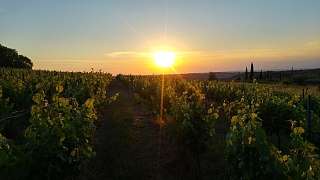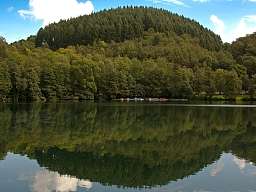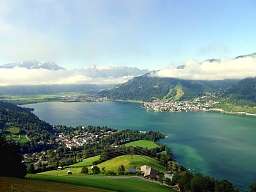Romantik Blog
Holidays in Italy - The most beautiful wine regions of Italy
The sun warms the gentle hills, noble wines thrive on the green slopes: wine-growing has been deeply rooted in Italy for a long time. Wine has been cultivated in the country since ancient times, at that time mainly in the southern regions. It was not without reason that the ancient Greeks called southern Italy "Oinotria" - the land of wine. But the northern parts of the country were also indispensable for development, as the ancient people of the Rhaetians invented transport and storage in wooden barrels. Today, this proud heritage can be felt at every turn, because wine is grown in every one of the 20 Italian regions. As a result, the country is one of the largest producers in the world, along with France and Spain. The diverse climatic and geological conditions as well as the different traditions also make the country's various wine regions from South Tyrol to Sicily incomparable in taste.
South Tyrol: A small country on a grand scale
The northernmost region of the country may be one of the smallest wine regions in Italy, but it is also one of the best. Environmentally friendly cultivation methods, often involving manual labour on steep slopes, promise South Tyrolean winegrowers resilient grapes and outstanding quality. Mediterranean sunshine coupled with alpine scenery and fertile soils have made South Tyrol the country's premier white wine region. The nature of the landscape gives rise to authentic wines with their own character, while the winegrowers rely on class rather than mass.
Activity tip for South Tyrol: From October to the beginning of December, Törggele time attracts visitors to South Tyrol from near and far. The taverns open their doors, let you taste the still young wine and serve local specialities. The custom goes back centuries: back then, farmers met to taste the harvest. Today, the tradition combines culinary highlights with hikes through autumnal forests.
Tuscany: rolling hills, red wine
Tuscany is the country's most popular holiday region for German holidaymakers. But it is not only the beautiful coastal regions that inspire enthusiasm; the winegrowing also enraptures visitors. The gentle hills and the climate of the region give rise to world-famous drops such as Chianti and Brunello. The classic Chianti is undoubtedly one of the most famous and important varieties. It is grown in the region of the same name in Tuscany in a strictly limited area between Siena and Florence. Brunello, on the other hand, is the most expensive of the classic wines in Tuscany and is grown exclusively on the hills around the village of Montalcino. The most famous white wine of the region is Vernaccia di San Gimignano, which is made from the Vernaccia grape. As a dessert wine, the Vin Santo is very popular.
Hotel tip for Florence: The historic Romantik B&B Casa Thiele alla Signoria is perfect for a city trip to Florence and exploring the surrounding nature of Tuscany.
Lombardy: The Champagne of Italy
Even the Etruscans planted wine in Lombardy. The region borders on Switzerland and is known today for its large amount of sparkling wine produced by bottle fermentation, which is grown in the Franciacorta region. Milan, the capital of Lombardy, is also home to Italy's largest wine market. The best wine-growing areas are south of Lake Iseo and Lake Garda between Bergamo and Verona. But noble grapes also grow on the vines in Valtellina on the Swiss border. Probably the best-known wine is Lugana, but French grape varieties such as Chardonnay and Pinot Grigio also thrive in Lombardy.
Veneto: much more than just Prosecco
The varied hilly landscape of Veneto between Verona and Venice is one of Italy's most important wine-growing regions. This is mainly thanks to varieties such as Soave, Amarone, Valpolicella and Prosecco. Soave is undoubtedly one of Italy's most famous white wines. East of Verona, the grapes ripen in the area of the town of the same name. The region's great pride, however, is Prosecco, which has conquered the world from Veneto and is usually offered as Frizzante or Spumante.
Piedmont: Red wines with character
Characterised by rolling hills and medieval castles, Piedmont is famous for its red wines. Especially the spicy Barolo, named after a small village in the region, is drunk all over the world. But Barbaresco and Roero also come from here. The heart of wine production lies in the Langhe region. Here, wine connoisseurs will find magical places like Neive and Treiso. The most important grape variety is the Nebbiolo grape, from which famous drops like Barolo and Barbaresco are made. Due to their character and typicality, the wines from Piedmont are undoubtedly among the best in Italy.
Apulia: Hot climate and red wine
In the south-east of the country, in the heel of the Italian boot, lies Puglia. With Sicily and Veneto, the region is one of the largest wine-growing areas and is particularly impressive with its red grapes. The most famous building in the area is undoubtedly the Castel del Monte, built by Emperor Frederick II, whose surroundings offer good conditions for growing grapes. The hot climate of the region gives the winegrowers wines with a strong character, such as Nero di Troia. The best Primitivo wines, on the other hand, are found around the town of Manduria in the province of Taranto.
Sicily: An island like a whole continent
With more than 110,000 hectares of vineyards, Sicily is Italy's largest wine-growing region. For a long time, the island in the south was only known for the sweet wine Marsala, but the region is now one of the most dynamic wine-growing areas in the country. After most winegrowers initially focused on growing international grape varieties, they later rediscovered indigenous grape varieties such as Nero d'Avola, which is now considered the most important and best-known wine on the island. Sicily's climate and viticulture are characterised by contrasts: most regions with a controlled designation of origin are found in the west, while the north-east is attracted by the high altitude cultivation around Mount Etna, whose climate and soils are so complex that very different wines are produced.
Post your comment
Comments
No one has commented on this page yet.
RSS feed for comments on this page RSS feed for all comments



